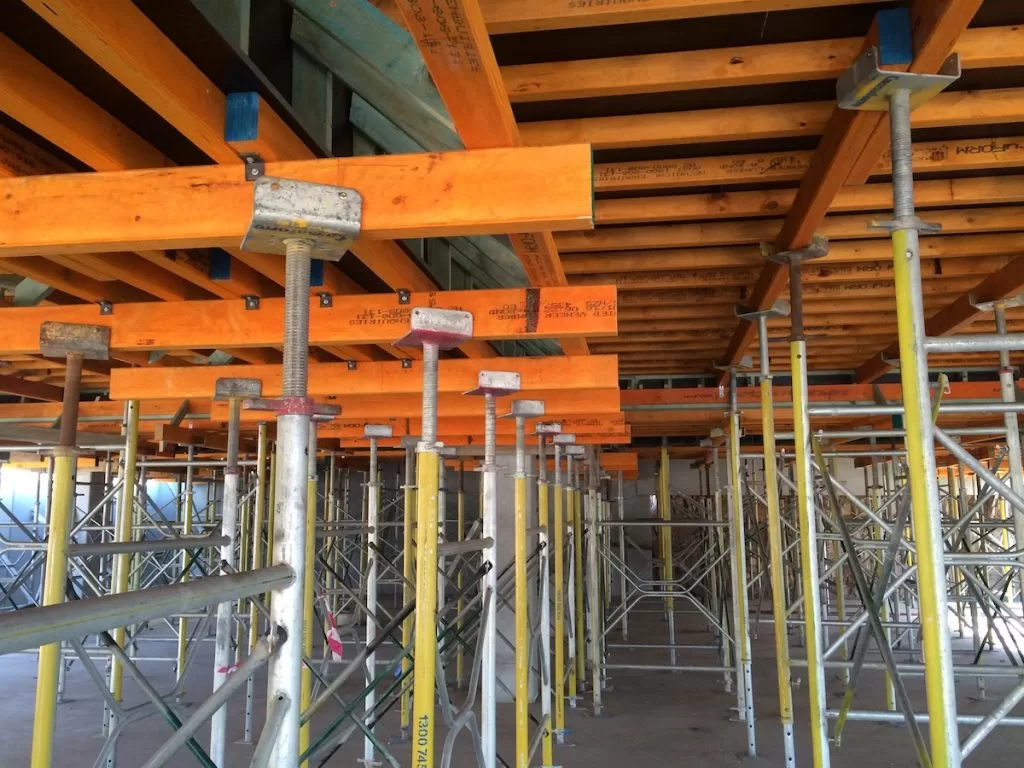The global formwork market is poised for substantial growth in the coming years, with a projected size of USD 6.06 billion by 2024. This expansion is primarily driven by the rapid growth of the residential and commercial construction sectors worldwide, fueled by new construction projects and the renovation of existing sites. The increasing demand for residential spaces due to population growth also presents significant growth opportunities for the global formwork market.
While timber and plywood have traditionally been the key raw materials used in formwork manufacturing, there is a growing trend towards the adoption of aluminum formworks. Aluminum formworks are gaining popularity due to their lightweight nature and low density. They also offer a longer lifespan compared to their timber and plywood counterparts, making them more economical in the long run. As a result, the market is expected to experience substantial growth from the utilization of aluminum formworks.

Construction companies are experiencing rapid growth, and the overall formwork market is estimated to reach around USD 6.12 billion by 2024, registering a healthy compound annual growth rate (CAGR). This growth can be attributed to construction companies’ increased focus on labor efficiency and time-saving methodologies.
The construction sector’s strong demand is the driving force behind the growth of the formwork market. The industry is expanding at a remarkable pace, with current cement production expected to double in the near future. Recent advancements in concrete technology, such as high-performance concrete and concrete with large ashes, have revolutionized the field of formwork, enabling faster construction and enhanced durability. These innovations have also presented new challenges for formwork systems.
Formwork manufacturers are investing in research and development to cater to India’s unique working conditions. Companies like Peri have introduced lightweight board formwork systems, such as Peri Liwa, which are suitable for locations with limited crane capacities or where manual labor is required. Such modular construction techniques are commonly employed in residential housing, where the same design needs to be replicated in large numbers. These formwork systems could play a crucial role in India’s ambitious affordable housing projects.
In the construction industry, various types of formwork systems are used. These include engineered formwork systems, traditional timber formwork, reusable plastic formwork, stay-in-place structural formwork systems, permanent insulated formwork, and flexible formwork. Each type offers specific advantages and applications, catering to different construction requirements.

The demand for formwork and scaffolding systems is driven by a shortage of skilled labor in the construction sector. Contractors are facing increasing pressure as construction costs rise and budgets tighten. In this era of lean construction methods, semi-automated and automated formwork systems have emerged as a solution. These systems provide improved efficiency and cost-effectiveness.
The Indian construction industry has witnessed significant growth in response to the housing and infrastructure needs of a growing population. With the entry of multinational companies, construction accuracy and speed have increased. However, there is a need to keep up with the demand. Conventional construction methods may be cost-effective, but they often fail to deliver the required quality and speed. Therefore, there is a growing need to adopt the latest construction technologies. Formwork plays a crucial role in construction, accounting for a significant portion of the overall construction cost. New formwork technologies have been introduced to increase overall efficiency, ensure high-quality construction, and expedite the construction process.
In conclusion, formwork is an integral part of the construction industry, providing the necessary support and shape to concrete during the construction process. With a variety of formwork systems available, contractors can choose the most suitable option based on project requirements, complexity, budget, and desired quality. The formwork market is experiencing significant growth, driven by factors such as the demand for construction, advancements in concrete technology, and the need for labor-efficient solutions.


